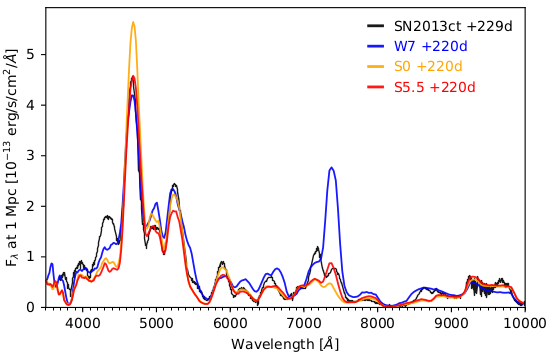Daily Image
15-11-2018Colloquium - Late-phase radiative transfer of Type Ia supernovae
| Submitter: | Luke Shingles |
| Description: | Type Ia supernovae are well-studied objects, largely because of their usefulness as precise distance indicators for cosmology and their role in the production of Fe-peak elements for chemical evolution. However, while Type Ia supernova almost certainly involve the thermonuclear explosion and unbinding of a carbon-oxygen white dwarf, understanding the possible role of a binary companion and the mechanism of explosion remain open problems in supernova research. Multi-band observations including radio and X-ray have placed deep upper limits on the density of the surrounding medium and disfavour most scenarios involving a non-degenerate companion. Several other scenarios remain, and thanks to theoretical developments in the last decade, we now have a variety of 3D hydrodynamic explosion models available. These can can be tested with nucleosynthesis and radiative transfer simulations to compare to observational light curves and spectra. The image shows synthetic spectra of a Chandrasekhar-mass model (W7) and two sub-Chandrasekhar-mass detonation models with no gravitational settling (S0) and with 5.5 Gyr of extremely efficient settling (S5.5) in the white dwarf progenitor prior to explosion. The model with more gravitational settling explodes with a greater concentration of neon-22 in the centre, which leads to more production of stable isotope nickel-58, particular noticeable in the spectral feature at 7378 A. Also shown is a typical Type Ia supernova SN2013ct observed by Maguire at al. (2016). |
| Copyright: | Colloquium |
| Tweet |  |
